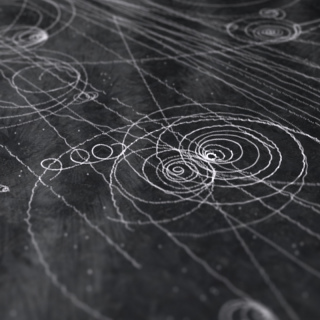Subvenciones relacionadas:
General
La búsqueda de vida en el Universo se ha visto impulsada por los recientes descubrimientos de planetas alrededor de otras estrellas (los llamados exoplanetas), convirtiéndose en uno de los campos más activos dentro de la Astrofísica moderna. En los últimos años los descubrimientos cada vez más numerosos de nuevos exoplanetas y los últimos avances en el estudio de sus atmósferas no sólo están dándonos valiosa nueva información sobre sus propiedades físicas, sino que nos están permitiendo además poner las propiedades de los planetas de nuestro Sistema Solar dentro un contexto más global. El campo esta acercándose al importante descubrimiento de los primeros planetas potencialmente habitables, impulsando estudios más detallados de estos planetas. Con el lanzamiento de las nuevas misiones como JWST, CHEOPS, TESS, ARIEL o PLATO, al campo de exoplanetas se le plantea un futuro muy excitante.
Es por esta razon que este campo se ayuda de y, a su vez motiva, el desarrollo de instrumentación cada vez más sensible y estable tanto para telescopios de tierra como para las misiones espaciales. Dos frentes para los que nuestro grupo esta especialmente preparado. Por un lado, durante los ultimos años hemos desarrollado tecnicas de observacion y reduccion de transitos de exoplanetas para los telescopios del ORM, siendo el nuestro uno de los grupos mas productivos en la explotacion de GTC. Por otro lado, todas las misiones espaciales ESA (presentes y futuras) relacionadas con exoplanetas cuentan con uno o varios de los componentes del proyecto como CoIs.
En el marco de este proyecto, pretendemos que los investigadores del IAC mantengan una situación aventajada con la explotación de OSIRIS y EMIR, instrumentos de primera luz de GTC, y participen en la construcción, comisionado y operación de nuevos instrumentos, como el espectrografo óptico de alta resolución HORUS en el GTC. La explotacion de la fotometria y espectroscopia de transitos con LIRIS en el WHT es tambien uno de nuestros principales intereses, especialmente en preparacion de la instalacion en 2015 del instrumento EMIR en el GTC.
En resumen, el proyecto "Exoplanetas y Astrobiologia" se centrará entorno a estas cuatro lineas principales de actuacion:
1) Caracterización de las propiedades fisicas y atmosfericas de exoplanetas (GTC, WHT, HARPSN, CARMENES, ESPRESSO, ARIEL etc.)
2) Búsquedas y confirmacion de exoplanetas por transitos (CoRoT, Kepler, K2, CHEOPS, XO, LCOGT, WFC, PLATO, etc.)
3) Busquedas/ confirmacion de exoplanetas por velocidad radial (HARPSN, HORUS, LCOGT, SONG, CARMENES)
4) Astrobiología
Miembros
Resultados
- Deteccion de He en la atmosfera de un exoplaneta por primera vez, publicado en Science.
- Deteccion de un planeta entorno a la estrella de Barnard, publicado en Nature
- Deteccion de los primeros planetas del la mision TESS, con varios articulos de impacto
- Descubrimiento de rasgos de Na y Halpha en el espectro de KELT-20b con el TNG
- Publicación del Handbook of Exoplanets, la obra de referencia más extenso en el campo de los exoplanetas. Este Manual fue editado por miembros de nuestro grupo e incluye contribuciones de unos 300 expertos en todo el mundo, incluidos 12 miembros de IAC.


